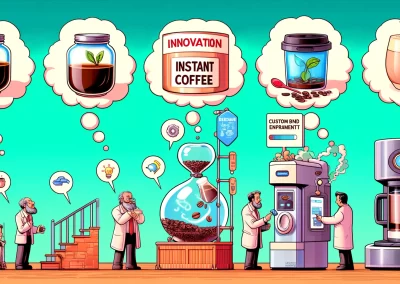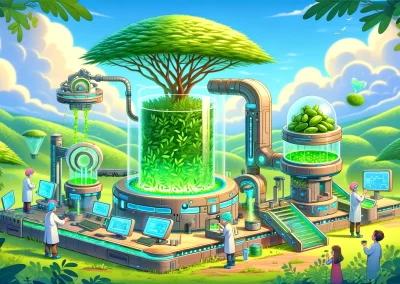Coffee makers are a must in most kitchens, this is one evidence that people love coffee any time of the day. But thinking about coffee makers, can you remember when was the last time you cleaned your coffee machine? It’s probably one of the appliances in our home that gets clean seldom next to our vacuum cleaners.
Not cleaning your coffee maker can lead to bacteria and fungi build up. It’s best to clean your coffee maker every after use to ensure that living organisms won’t develop in it. Read on to see how to safely clean your coffee maker.
Cleaning Coffee Maker with Bleach
There are a lot of coffee lovers out there who are wondering if they can use bleach to clean their home drip style coffee maker. We’re here to tell you that you should not use bleach to clean your machine. There are other ways to clean your coffee maker that won’t damage it.
While bleach is used in commercial and industrial settings to clean equipments, they need enough time and precautions to ensure that there will be no residue. This is important to avoid any contamination that could cause illness or affect the taste of the final product.
If you’re dead set on using bleach to clean your drip coffee maker, read below on how to do it the right way. Just remember that bleach is a slow and dangerous disinfectant, and it is an overkill on the bacteria. Bleach can also leave mineral deposits on surfaces.
Steps:
- Mix water and bleach
- Run coffee maker cycle
- Empty the coffee pot
- Repeat until bleach is used
- Clean with hot water
- Make sure coffee maker do not smell bleach
- Air dry
Materials
- 1 tablespoon bleach
- 1 gallon of water for bleach solution
- 5 gallons of clean water
- Drip coffee maker
Mix Bleach and Water
Do not put your bleach into the coffee maker directly. Mix it with water first. Combine 1 tablespoon of bleach into 1 gallon of water. Remember to not over do adding bleach. Use exactly 1 tablespoon or less if you want.
Run a Full Cycle on the Coffee Maker
Pour your bleach solution into the water reservoir and let it run a complete cycle in your coffee maker.
Pour Out the Liquid From the Coffee Pot
After running a full cycle and filling the coffee pot, remove all bleach and water mixture immediately. We need to minimize the amount of bleach solution that will hit the heating plate.
Repeat Until All the Bleach Water Is Used Up
Use all 1 gallon of bleach and water mixture into your coffee maker. This can take several rounds depending on how big your coffee maker. Make sure to leave a note while you are cleaning the coffee maker or do not leave it unattended. This is to ensure that no one will use it while you are cleaning.
Clean With Hot Water
Run 5 gallons of hot water into your coffee machine. This will take a while depending on the model of your coffee machine and since 5 gallons is a lot of water. Using hot water will minimize the time your machine will boil water. Repeat the process until you are done with 5 gallons of water. This will ensure that there is no bleach residue left.
Smell the Final Batch of Water
Smell the last batch of water from your 5 gallon run to make sure that there is no bleach residue left. Bleach has a strong and distinctive smell and having no smell or any odor in your last batch means there is no bleach residue. If you want to be on the safer side, you can test the PH level and if it’s a 7 then you are good to go.
Air Dry
Remove the coffee pot from your coffee machine and air dry everything in the countertop or out in the sun. This process is critical since bleach will leave a residue as it dries, and you can determine if you need to do another cycle of cleaning.
Tips in Cleaning Coffee Maker
The number 1 tip in cleaning your coffee maker is to clean and dry it after every use. This way it will not go bad that you need to use bleach to remove any bacteria or fungi. Prevention is better than cure!
Make it a habit to remove the filter and run a clean water cycle after your morning coffee.
Alternatives in Using Bleach
If you’re concerned about the safety of using bleach to clean your coffee system, there are definitely other effective cleaning options available. Some common alternatives to bleach that can be just as effective in cleaning your coffee system include white vinegar, baking soda, and even lemon juice.
To clean your coffee maker, mix equal parts white vinegar or lemon juice with salt. This is far more effective than using bleach, and much safer as well. The acidic nature of vinegar and lemon juice helps to break down coffee stains and build-up, making it easy to wipe away.
Both vinegar and lemon juice can help kill bacteria. When combined with salt and heat, they are even more effective. The salt can help to scrub away any bacteria that is present, while the heat will kill any remaining bacteria. This makes them both great options for cleaning your coffee maker.
Most importantly, let’s talk about safety. The worst that can happen if you use lemon juice or vinegar instead of bleach is a sour or salty cup of coffee. However, if you use bleach, you run the risk of poisoning yourself. I think I’ll risk puckering my lips.
Cleaning your coffee maker with bleach is a bad idea. If you want to clean it safely, use lemon juice or vinegar. To do so, follow these steps:
Ingredients
- Water
- Lemon Juice
- Salt
- Vinegar
Mix it
- 1 is to 1 ratio for water, lemon juice, and salt.
- 1 is to 1 ratio for water, white vinegar, and salt.
The combination of acid from vinegar and lemon juice along with salt have antibacterial properties that will increase as heat is applied.
Run 2 Cycles
Run 2 cycles with hot water using the lemon/vinegar and salt solution. Pour out the water after every cycle.
Run 4 Cycles of Hot Water
Run 4 cycles of hot water after using the acidic mixture. This is to ensure that you will have a fully cleaned coffee maker. You can actually run just 3 cycles, but this depends on what model of coffee maker you have and in your taste buds.
Air Dry
Similar to cleaning with bleach, you need to air dry your coffee maker for a day out in the sun or in your countertop. This is an important step so do not skip it!
Conclusion
Coffee machines are great inventions and as today, there are a lot of different innovations in this machine that we use in our home every day. It is important that we take care of it to avoid any damage and any health hazards that may come from a dirty pot of coffee.
If you can, clean and dry your coffee maker every after use to avoid using harsh chemicals on it. It is never recommended to use any chemicals or bleach for cleaning your cookware or anything that you make food in. Look for safer alternatives and natural remedies.
The best cleaning agent will be your consistency. Clean your coffee maker every day and you will not worry about it going bad.









